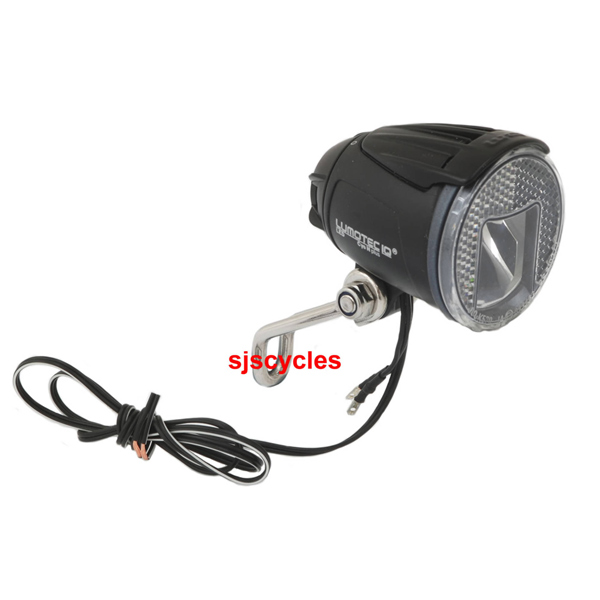Hi All,
I have found a box full of very shiny NOS Union HS3 halogen headlights and matching tail lights in the bike shed. As some may recall these were very nicely made and worked well (for their era). I have run out of money to spend on expensive dynamo lights but still need a couple more and thought I might try retrofitting the Union's with LED emitters.
Nothing fancy like the back-to-back emitters some techno-wizz types have constructed. Just something super simple. I'm aware of the likely shortcomings re. illumination-point positioning so I'm not expecting miracles. A mate has a nice lathe so I thought I'd just try XR-Es or XP-Gs mounted on a small aluminium 'plug' jammed into the existing HS-3 bulb socket on the light's plastic base and designed to get the emitter as as far back as possible with respect to the curved reflector.
Naturally the question of heatsinking has arisen. Mind you, not one of the LED dynamo-driven lights I have made (from 2 to 6 emitters) has ever felt even warm to the touch after extended use. Most have been mounted on crude alu extrusion but even so, no discernible rise in temperature, even immediately behind the emitters. The 'plug' I have in mind for these Union conversions will be about 9mm in diameter and around 10mm long with a wider 1 X 15mm plate machined on top to take the LED's board. It'll be a tight fit into the housing's plastic base. I'll probably be running 2 white leds in series with one of Martin's simple circuits with a red tail light in the circuit as well (either an XR-E as part of the rectifier or an old B&M Toplight in parallel). So the dynamo's current will be shared across 2-3 emitters.
My question for the hive mind is, will this be adequate with regard to temperature protection? Has anyone actually run any tests - instrumental or otherwise - on temperature changes with dynamo driven leds?
Thanks,
Savvas.
I have found a box full of very shiny NOS Union HS3 halogen headlights and matching tail lights in the bike shed. As some may recall these were very nicely made and worked well (for their era). I have run out of money to spend on expensive dynamo lights but still need a couple more and thought I might try retrofitting the Union's with LED emitters.
Nothing fancy like the back-to-back emitters some techno-wizz types have constructed. Just something super simple. I'm aware of the likely shortcomings re. illumination-point positioning so I'm not expecting miracles. A mate has a nice lathe so I thought I'd just try XR-Es or XP-Gs mounted on a small aluminium 'plug' jammed into the existing HS-3 bulb socket on the light's plastic base and designed to get the emitter as as far back as possible with respect to the curved reflector.
Naturally the question of heatsinking has arisen. Mind you, not one of the LED dynamo-driven lights I have made (from 2 to 6 emitters) has ever felt even warm to the touch after extended use. Most have been mounted on crude alu extrusion but even so, no discernible rise in temperature, even immediately behind the emitters. The 'plug' I have in mind for these Union conversions will be about 9mm in diameter and around 10mm long with a wider 1 X 15mm plate machined on top to take the LED's board. It'll be a tight fit into the housing's plastic base. I'll probably be running 2 white leds in series with one of Martin's simple circuits with a red tail light in the circuit as well (either an XR-E as part of the rectifier or an old B&M Toplight in parallel). So the dynamo's current will be shared across 2-3 emitters.
My question for the hive mind is, will this be adequate with regard to temperature protection? Has anyone actually run any tests - instrumental or otherwise - on temperature changes with dynamo driven leds?
Thanks,
Savvas.


